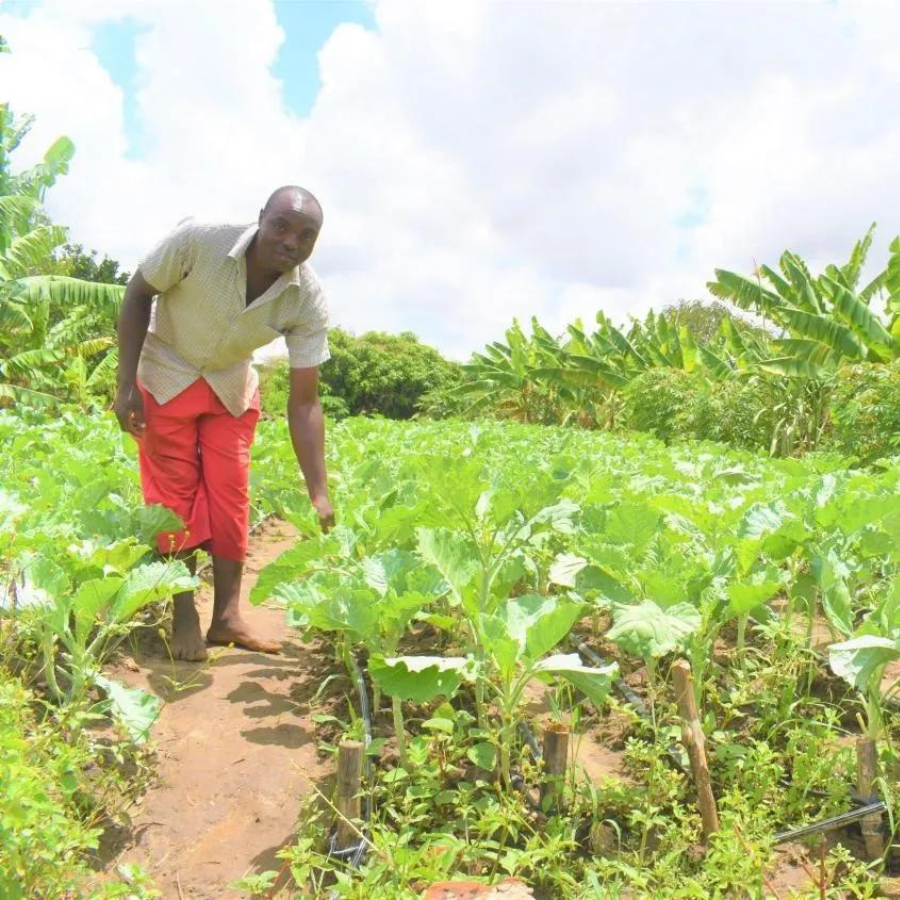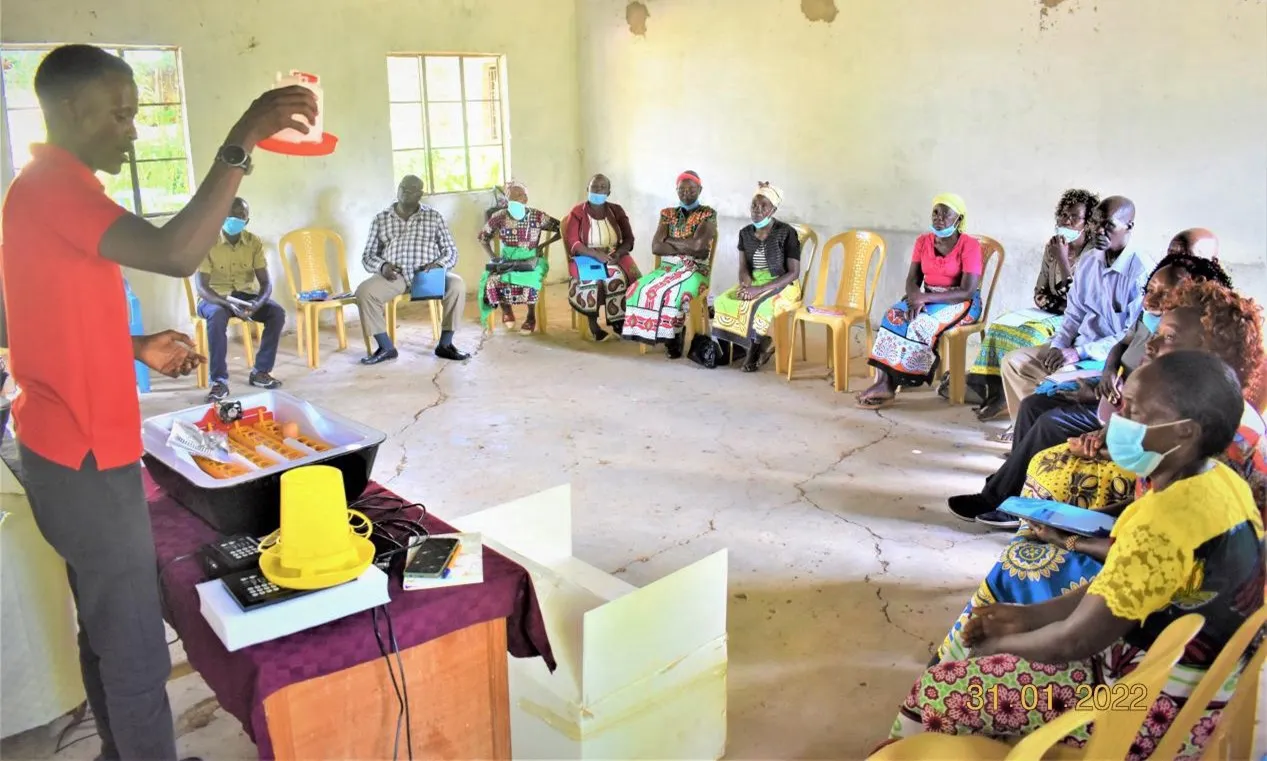Which Green Energy Technologies will Boost Jobs and Income? Farmers in Kitui, Kenya Decide
We hear from guest blogger Kelvin Muthui about a green energy technologies project in Kitui County, Kenya that aims to create employment opportunities and generate more profit for agriculture and poultry farmers

By Kelvin Muthui (Programme Coordinator in the Governance and Advocacy team of Caritas Kitui)
This blog series, entitled Voices in AgTech, highlights the people and organisations whose work has contributed to increased awareness of the role of solar-powered agricultural technologies. In this third blog article in the series, we hear from guest blogger Kelvin Muthui about a green energy technologies project in Kitui County, Kenya that aims to create employment opportunities and generate more profit for agriculture and poultry farmers.
The blazing sun that beats down on Kitui County in eastern Kenya presents abundant opportunities for generating clean, green energy to power local economies and create jobs and income.
Caritas Kitui, Loughborough University and IIED have been working alongside the Kitui county government and in close collaboration with local communities to explore how business packages incorporating green solar energy technologies can boost employment and income for agriculture and poultry farmers. The project is funded by UK PACT.
Energy challenges facing farmers in Kitui: what we learnt
A scoping survey of farmers across five Kitui sub-counties − Kitui Central, Kitui Rural, Kitui East, Mwingi Central and Kitui South − was a useful starting point for helping us understand the energy needs of farmers and the barriers to affordable green energy.
Agriculture. Prosperous agriculture needs reliable irrigation. Solar-powered water pumps offer mitigation prospects by providing a cleaner alternative to petrol pumps. However, solar pumps are less powerful; dependence on the sun also restricts usage to farming activities carried out before the sun sets.
Farmers cited the high upfront costs of buying and installing the solar panels needed to power the pumps; they also expressed concern about the risks of theft and vandalism since the solar systems are installed in open places. Geographical accessibility was a further hurdle: solar water pumps require large panels which can only be bought from major towns, often up to 90km away.
Poultry. Poultry farming, as with agriculture, depends on a reliable electricity supply. Power cuts across Kitui are common — our scoping survey found two-thirds of farms connected to the grid experience problems with power supply. These problems are more common in remote, rural areas rather than in peri-urban and urban areas.

One farmer, whose main source of income came from the sale of chicks, explained that successful incubation needs a constant temperature generated by a continuous electricity flow. The farmer explained how, in one instance, her whole incubator of 192 eggs had spoiled following a five-day power cut. With chicks selling for KSh 100 each, the farmer lost KSh 19,200 in revenue as well as incurred running costs of around KSh 5,500.
Solar egg incubators offer a reliable backup if grid connectivity fails. But capacity is a challenge as these incubators accommodate fewer eggs than standard grid-connected incubators.
Farmers also highlighted that energy is needed not only for running incubators but for lighting poultry houses and security lighting — both of which are needed after sunset at 6 PM.
Promoting clean, green business models
The next stage was to get feedback from farmers on business models developed under the Kitui County Energy Plan alongside the Kitui County government, as part of a comprehensive technical assistance package.
We presented the models in workshops to four different communities: 42 women and 25 men. The workshops were highly inclusive to ensure views of marginalised groups were captured: farmers, energy investors, local government representatives were joined by youth, the elderly, civil society organisations, people with disabilities and religious groups among others.
Taking the long view
The scoping survey had shown that farmers tend to think short term − from season to season − and that they make investments depending on what they can afford in the coming months.
The risks of high upfront costs make farmers uneasy: they prefer to invest in technologies they can pay back in a single harvest season. So green energy technologies, often costing ten times the price of grid-powered equipment, are rarely considered a viable option.
But a longer trajectory — perhaps over a five-year period — shows that green energy technologies incur comparatively low running and maintenance costs. While supporting a general shift to low-carbon development, green energy technologies can bring greater profit for farmers over the longer term.
Farmer feedback: why cooperative models work
Farmers working in cooperatives is not common in Kitui, with most selling their produce individually from the farm gate and putting proceeds directly towards household needs.
But cooperatives enable farmers to pool resources and share costs — whether for the purchase of equipment, for energy bills or for other non-energy expenses in the value chain.
The cooperative models we presented would enable group members to club together to share the cost of green energy technologies. They emerged as the most popular during the workshops.
Discussions explored how seed capital could support cooperatives to buy produce from farmers. Farmers would not need to sell produce immediately after harvest but could instead sell to the cooperative. This would bring in income while also awaiting dividends from profit margins made later from the cooperative’s voluminous sales.
Cooperatives: circumventing inequitable gender norms
Poultry businesses are cheaper to start up and run, and women farmers tend to dominate this sector. But due to inequitable gender norms across Kenya, women farmers do not have access to capital, nor collateral to secure loans for investments to grow their businesses.
While women run their poultry businesses and generate income, it is the man who is considered the head of the household − who controls most of the major investment decisions. And one study shows that the more successful women’s farming businesses become, the more likely it is that the man will step in and take control.
Cooperative models would allow women members to access cash advances against their deposit of produce after harvesting. They could pool their resources with other women farmers to invest in green energy technologies while splitting other upfront and running costs. This model also invites knowledge sharing — particularly valuable when embarking on the use of new, unfamiliar technology.
Strengthening the cooperative model
While cooperative models show great potential, they need interest and input from community groups to strengthen governance and leadership structures.
Good governance is key for driving the purpose, vision and values of the cooperative. It also supports robust record-keeping and financial management, and other systems that enable cooperatives to run smoothly − bringing healthy economic results.
Farmers need to build their skills, knowledge and experience to manage cooperatives efficiently, so they can operate effectively in increasingly competitive markets.
This piece was originally published on the IIED website and is linked to IIED’s current project of supporting the Kitui County government in developing an integrated energy plan using IIED’s ‘Energy Delivery Model’ approach.
***
About Author
Kelvin is currently a Coordinator in Governance and Advocacy Programme, Caritas Kitui. Has over the last 5 years supported advocacy work on Government policy review geared towards just energy transition for sustainable development; in Kenya and South Africa through the Alternative Mining Indaba (AMI) Conventions.